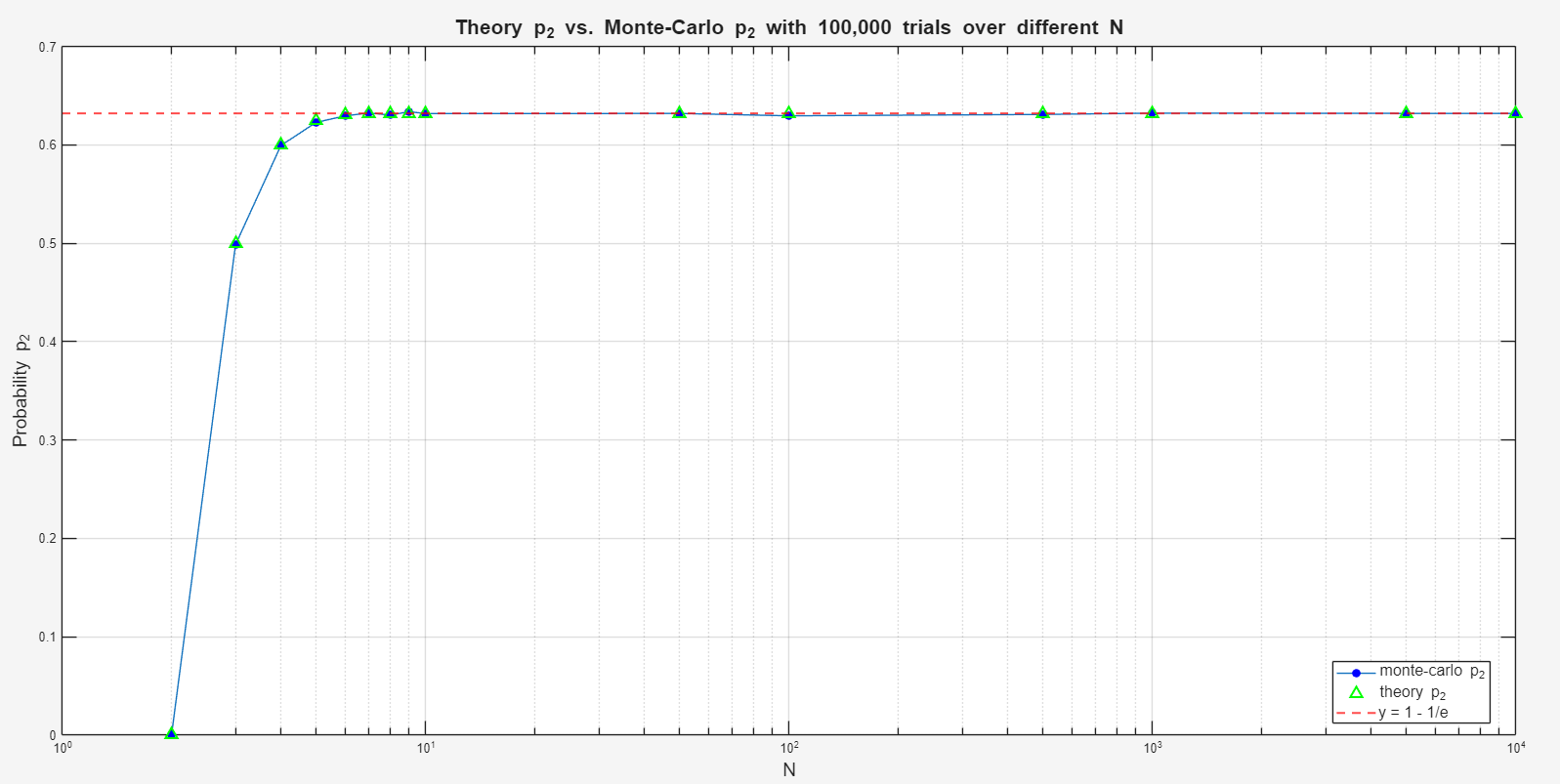



Jan 24, 2025
Fiddler answer:
Extra Credit:
Explanation:
It is more efficient to analyze both puzzles at once by analyzing the general problem: instead of 4 lily pads, what if there are
Let
Now, let us re-arrange the above equation to get a difference equation. This will give us opportunities to "telescope" series later on, which will greatly simply analysis.
Bringing one of the boundary conditions, namely
Thanks to telescoping, we can arrive at any
For which we know that
So, the closed form expression for
For the original puzzle,
For the extra credit, we let
Below is a graph of Monte-Carlo simulation of 100,000 trials vs theory for

So, it looks like our friend frog is not just happy sitting on lily pad #1, but rather on a natural log base!